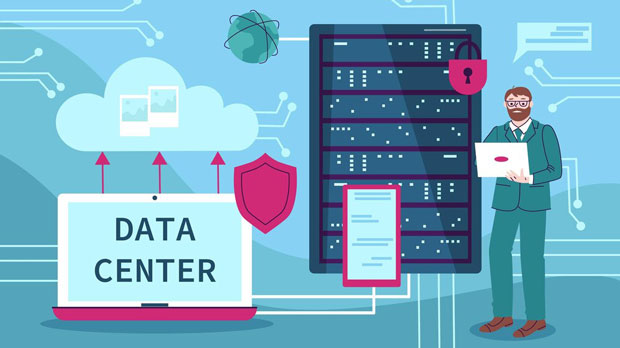When it comes to proxy services, flexibility is a key factor that many users prioritize, especially when switching between different protocols like HTTP and SOCKS5. While both protocols are widely used for masking IP addresses and enabling anonymous browsing, they operate in different ways, which affects how easily one can transition between them. Understanding the strengths and limitations of each proxy type is essential to selecting the right one for your needs. In this article, we will explore which proxy provides greater flexibility when switching between HTTP and SOCKS5, providing a detailed comparison of their performance, features, and practical applications. Understanding HTTP and SOCKS5 ProtocolsBefore diving into the comparison, it is important to first understand what HTTP and sock s5 proxies are and how they differ in terms of functionality. HTTP proxies work by acting as an intermediary between the client and the internet. They forward HTTP requests to the server and return the response back to the client. HTTP proxies are specifically designed to handle web traffic (HTTP/S), and they are effective for tasks like bypassing geo-restrictions and protecting user anonymity while surfing websites.On the other hand, SOCKS5 proxies are more versatile. They work at a lower level in the network stack, meaning they can support a wider variety of traffic types beyond just HTTP. SOCKS5 can handle HTTP, FTP, and even peer-to-peer traffic, making it suitable for applications that require a broader range of protocols, such as file sharing, gaming, and secure communication.Key Differences Between HTTP and SOCKS5While both proxy types serve the same basic purpose of masking the user's IP address and enhancing online anonymity, their differences play a significant role in how well they perform when switching between HTTP and SOCKS5.1. Protocol Support HTTP proxies are designed specifically for web browsing and HTTP/HTTPS traffic. They cannot handle non-HTTP protocols, which limits their application when switching between different types of traffic. SOCKS5 proxies, however, support multiple protocols, making them far more flexible when switching between HTTP and non-HTTP traffic.2. Speed and Performance SOCKS5 proxies tend to offer better performance, particularly when it comes to non-HTTP traffic. Since they are designed to work with a wider range of protocols, SOCKS5 proxies can be more efficient in handling complex requests without causing bottlenecks. HTTP proxies, by contrast, might experience latency or reduced speeds when switching to non-web traffic, such as FTP or gaming.3. Compatibility While HTTP proxies are widely compatible with web browsers and online services, they may face compatibility issues with certain applications. SOCKS5, being a lower-level protocol, is more universal and works well with a wide variety of applications, including web browsers, torrent clients, and video streaming services.Which Proxy Offers Greater Flexibility for Switching?Given the differences between the two, SOCKS5 proxies stand out as the more flexible option when it comes to switching between HTTP and SOCKS5. Here are the main reasons why:1. Multi-Protocol Support As previously mentioned, SOCKS5 supports a variety of protocols beyond HTTP, including FTP, POP3, and SMTP. This multi-protocol capability makes it far easier to switch between different types of traffic without the need to reconfigure or change the proxy settings. HTTP proxies, on the other hand, are limited to HTTP and HTTPS traffic, which makes them less adaptable in scenarios where you need to switch between different protocols.2. No Need for Reconfiguration With SOCKS5 proxies, the transition from HTTP to SOCKS5 can often be done seamlessly, without requiring complex reconfiguration. This ease of transition is especially beneficial for users who need to frequently change their proxy settings depending on the type of traffic they are handling. HTTP proxies, due to their protocol-specific design, may require more manual adjustments and configurations when switching to a different traffic type.3. Higher Performance in Diverse Use Cases SOCKS5 proxies are not only more flexible but also offer superior performance for diverse use cases. Whether you're browsing the web, streaming video, downloading files, or using a gaming client, SOCKS5 can handle it all without significant drops in speed or performance. The same cannot be said for HTTP proxies, which are primarily optimized for web browsing and may not perform well with other types of applications.4. Increased Security and Privacy SOCKS5 proxies also tend to offer better security features, especially when used in conjunction with additional encryption layers. While HTTP proxies can provide anonymity for web browsing, they might not offer the same level of protection for other types of traffic. For users who require both flexibility and privacy across a variety of online activities, SOCKS5 is the superior option.Practical Applications and Use CasesTo further illustrate the flexibility of SOCKS5 proxies, let's take a look at some practical applications where switching between HTTP and SOCKS5 would be beneficial.1. Web Browsing and Streaming For most users, HTTP proxies are sufficient for general web browsing. However, if you're trying to access geo-blocked content or stream videos from multiple platforms, a socks5 proxy is a better option. It offers higher compatibility with a wider range of streaming services and can bypass restrictions more effectively.2. Gaming and P2P Networks For users who are involved in online gaming or file-sharing activities, SOCKS5 is the preferred proxy choice. It provides the necessary flexibility to handle peer-to-peer traffic, ensuring better performance and stability during data transfers. HTTP proxies, on the other hand, might cause issues when trying to use them with gaming platforms or torrent clients.3. Secure Online Communications For users who need to secure their communications, such as sending encrypted emails or using secure messaging apps, SOCKS5 proxies provide enhanced security compared to HTTP proxies. The added layer of protection ensures that your data remains safe from prying eyes, especially when dealing with sensitive information.ConclusionIn conclusion, when it comes to switching between HTTP and SOCKS5 proxies, SOCKS5 proves to be the more flexible and versatile option. Its ability to handle multiple types of traffic, ease of use, and superior performance make it the best choice for users who need to switch between different types of protocols seamlessly. Whether you're browsing the web, gaming, or streaming content, SOCKS5 offers a higher level of flexibility, security, and performance compared to HTTP proxies. Therefore, if you require a proxy service that can easily accommodate a variety of online activities, SOCKS5 should be your go-to solution.
Aug 12, 2025



































































